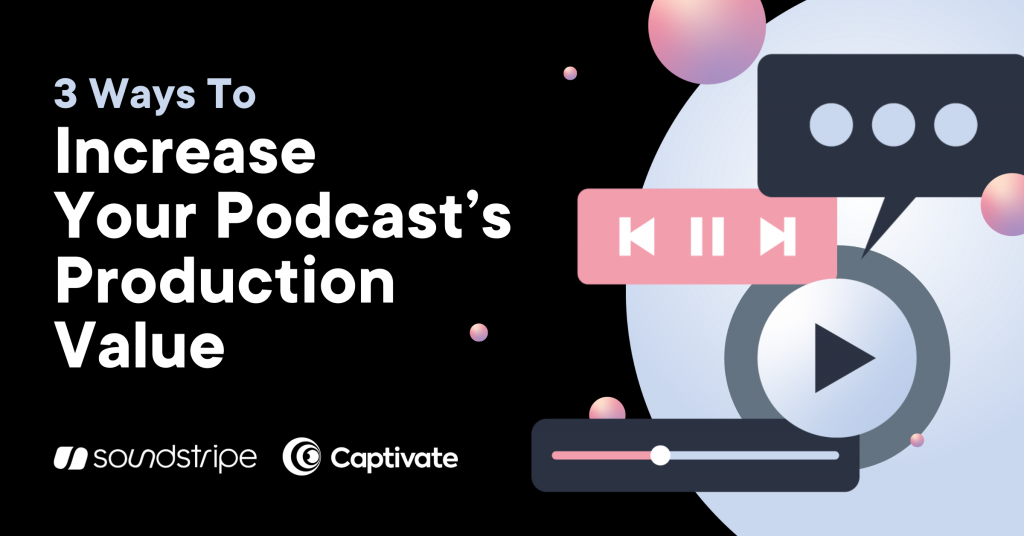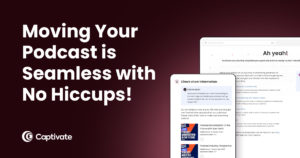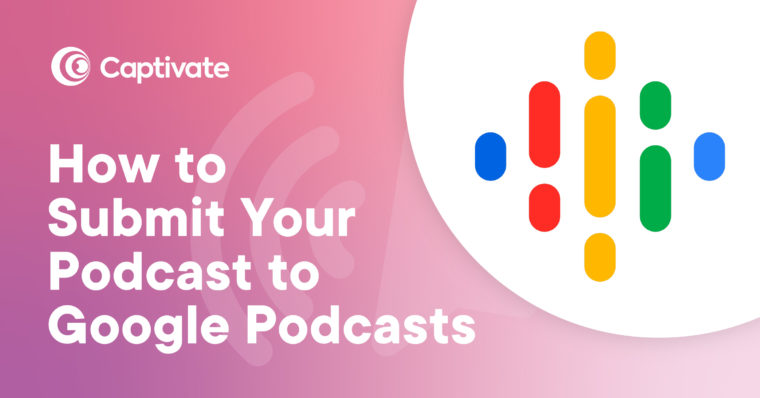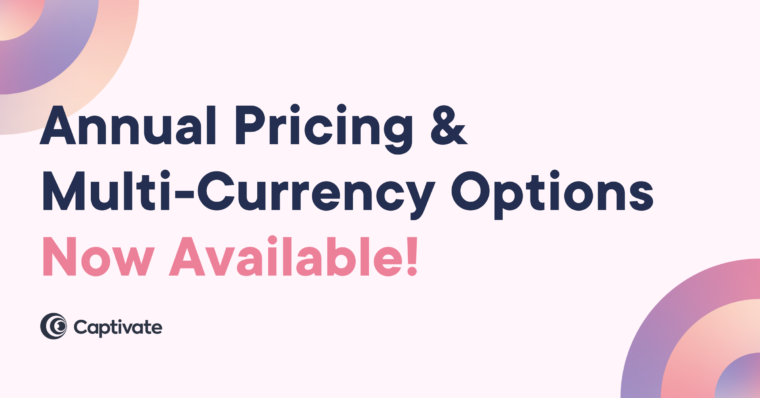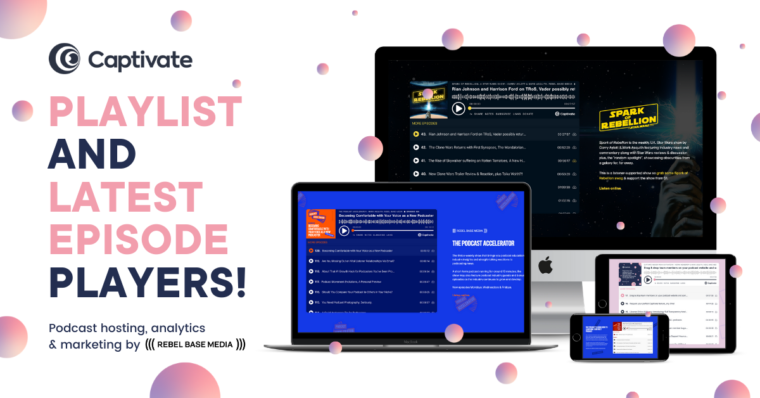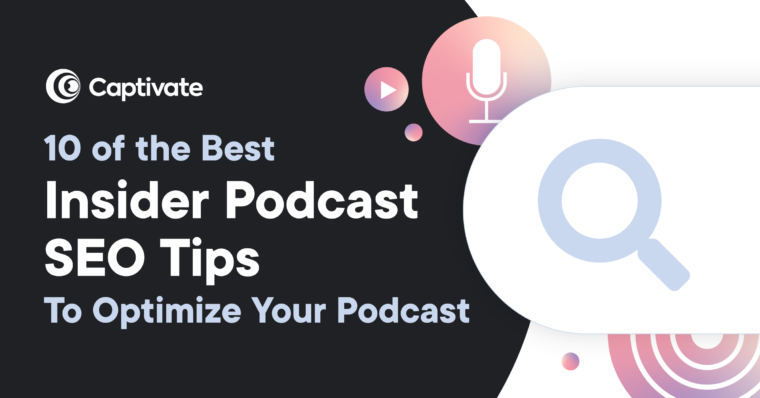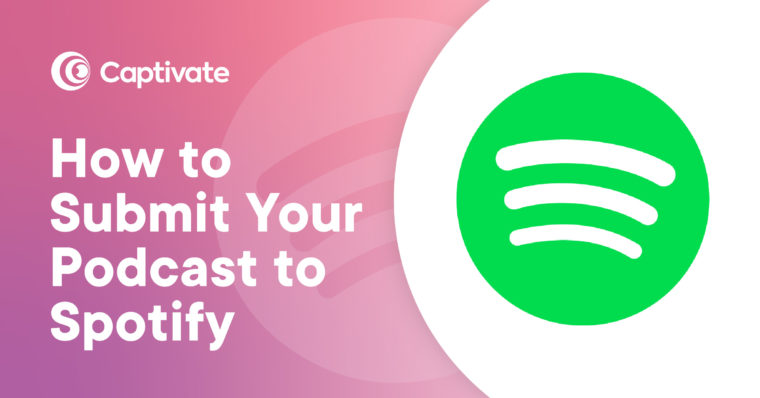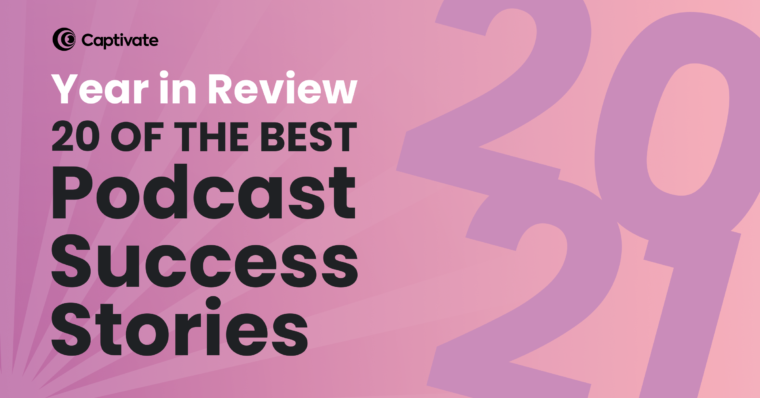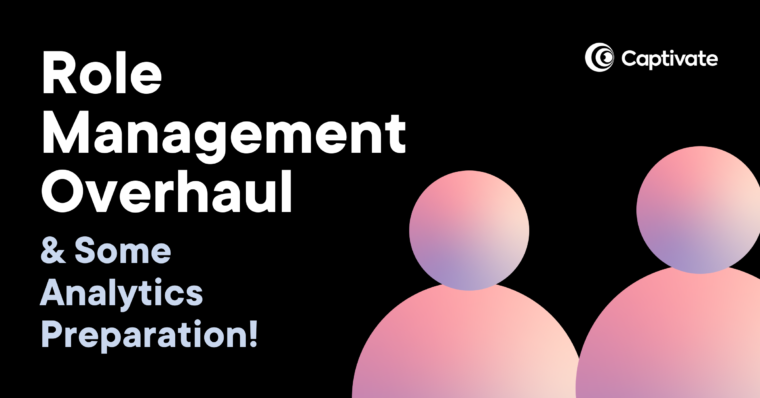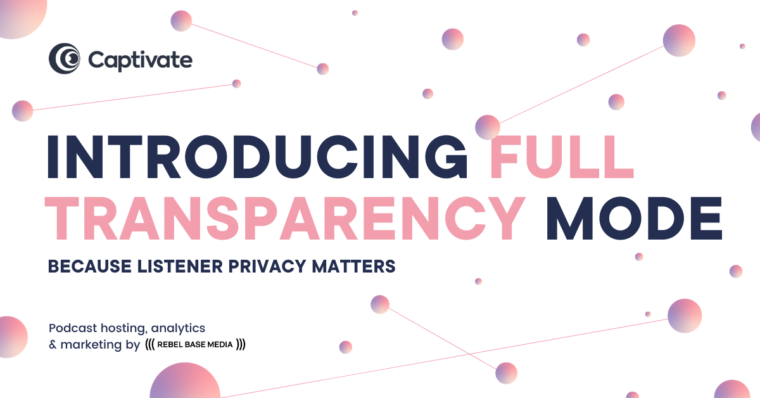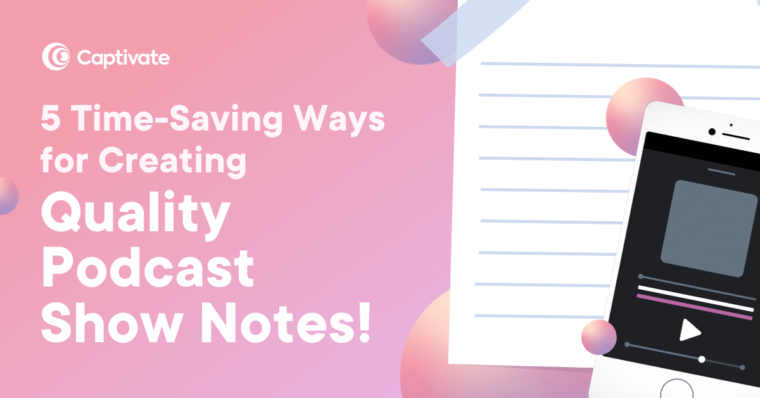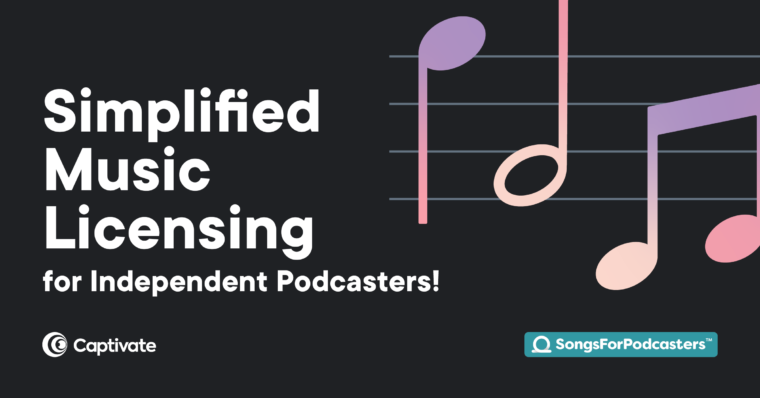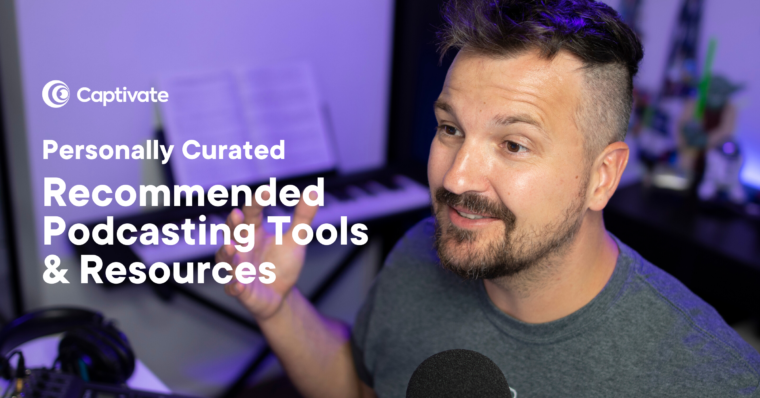This is a guest post from Soundstripe – a bunch of friendly folks specialising in unlimited, royalty free music, sound effects and curated playlists for podcasters. For 10% off your first Soundstripe plan, you can use our code ‘Captivate‘.
2020 has been a mixed bag (of mostly bad stuff) but one positive takeaway is that podcast listening has grown like never before.
It’s hard to even calculate our industry’s growth in the past few years, but podcasts have become a household hobby. 24% of Americans listened to a podcast in the last week, compared to only 12% in 2019.
But the more important number is that, as of April 2020, Apple Podcasts officially passed 1 million total podcasts. (And that number is shows, not episodes.) That number is almost double the recorded 550,000 podcasts from 2018.
If you’re a podcaster, that number is both exciting and terrifying. A growing industry means more competition, and that means it’s getting harder to attract and hold onto new listeners.
Podcasts are looking for ways to stand out. One easy starting point is to improve your show’s production value to create a quality podcast that will attract new listeners and keep them listening.
Here are 3 ways to increase your show’s production value.
In this article:
What Makes A Good Podcast?
Different people have different explanations for what a “good podcast” or “production value” actually means. In some circles, it’s the technical quality of your show; in others, it’s more of the underlying elements (your audio, the research, listener-host dynamics) and how they work together.
No matter which interpretation sounds best to you, we can all agree that listeners recognize production value. It’s why we gravitate toward podcasts from established networks like Gimlet Media or mainstream outlets like the BBC. Just seeing (or hearing) that name tells us that the show will meet a certain standard, and that means it’s worth our time.

Chances are you don’t have a huge brand backing your show. That’s okay — very few podcasters get to leverage that kind of reputation.
So why bother with high production values?
Top-tier podcasts continue to raise the bar for what people expect from audio. But, you can start improving the “perceived value” of your show by investing into production value just like those big-name organizations do!
That’s why production value matters. The quality of your content matters, of course, but what production value really does is tell listeners that you are a serious podcaster and your show is worth listening – and subscribing – to.
How To Boost Your Podcast Production Value
1. Improve Your Podcast’s Sound Quality
When we talk about “production value” in your favorite TV shows, your first thought might be about the visuals. That’s because you instinctively judge a visual medium by how it looks.
In the same sense, it’s fair to assume that listeners will judge a podcast by how it sounds. How people experience your show’s sound quality makes a big difference.
I’m sure you’ve experienced a podcast with subpar sound quality. Whether it was bad mixing, bad mics, or some other element, we’ve all seen just how brutal it can be to suffer through poor audio. And the last thing you want is to have people feel that way about your podcast.
Tackling sound quality is the most clear-cut way to increase production value. Investing into better equipment can make a difference, from better mics to better editing software. Heck, even adding a pop filter or shock mount can improve the sound quality. Every little bit helps.
Wondering how to make your podcast sound better? Get our recommendations for the best podcast equipment and software for a range of budgets.
2. Think About Sound Design
Contrary to popular belief, “sound design” is very different from “sound quality.” Thinking about sound design means planning out how listeners will experience and/or engage with your podcast.
That kind of perspective should change how you think about things like music choices, transitions, and sound effects. These audio pieces might not be as impactful as your voice, but they do play a significant role in the listening experience.
Listeners think of sound design as a direct correlation to production value. We expect good CGI and casting from an HBO show, and we make the same connection with podcasts. Things like sound effects suggest a big budget or professional editing, especially if used correctly.
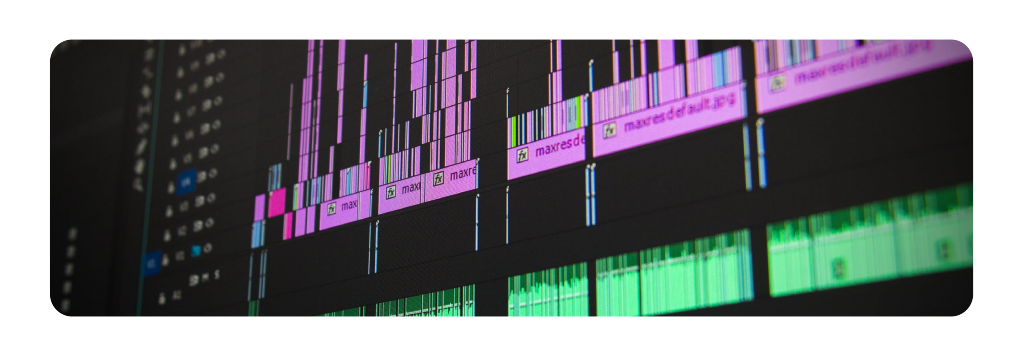
Thankfully, you don’t actually need a budget or a mixing engineer to sound design. You could add a song or sound to break up your show into segments that listeners will start to recognize. Or maybe you can add sound effects for a comedic or dramatic effect, depending on the type of podcast you run.
The obvious challenge is using these elements correctly. You don’t want to throw five songs and 15 sound effects into your next episode — that could be a pretty big over-adjustment. Your goal should be to let the sound design add to the listener’s experience, rather than distract from it.
You can find a lot of websites that provide music or sound effects. Whether you want to license high-quality audio files or (if you’re on a tight budget) look for free options, you’ll be able to find both sound effects and songs that can help boost your podcast’s production value.
3. Engage With Your Audience
If you’ve been podcasting for awhile, you probably have a website and social media accounts set up. Maybe you have an email inbox, a Discord server, or a subreddit. The point is, you’ve done the work to create a space where your listeners can engage with your show.
Another article we think you’d like...
Reading Time: 8 minutes Learn how to create detailed, SEO-friendly podcast show notes in just 5 steps with Captivate’s new time-saving snippets tool PLUS free template!
Establishing a relationship with your audience has a lot of benefits. It’s not all that different from building a business, a brand, or a YouTube channel.
But did you know that you can actually use that engagement to boost the production value of your podcast without spending any money?
Take listener questions or conversation topics. Podcasts that incorporate listener responses feel successful and keep listeners coming back time and time again. I mean, if people are sending emails/tweets/DMs, then obviously the show is doing something right… right?
To Recap…
Remember, podcast production value is as much about perception as reality. It’s absolutely possible for a show with 100 subscribers to match up with one that has 10,000 subscribers, at least in terms of how listeners perceive the podcast’s overall “value.”
And while boosting your podcast production value might not be a guaranteed path to a new career as a podcaster, it will definitely make the show something you — and your audience — are proud to be a part of.
[optin-monster-shortcode id=”ion9f5p440bswxvyojuo”]
Want More Podcasting Help and Resources?
Join our dedicated Podcast Launch Facebook group, a safe space where over 3000 podcasters help each other to start, launch and produce quality shows!
Read our How to Start A Podcast guide for step-by-step advice on designing, planning, recording and launching your very first podcast.
Subscribe to our YouTube channel for dedicated weekly coaching videos, Q&As and webinars hosted by the Rebel Base Media team.
Send us a message on our support channels – we’ll be happy to help you with whatever podcasting production question you have!
